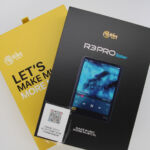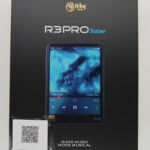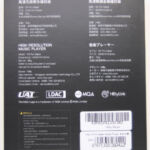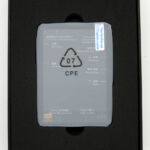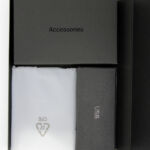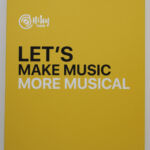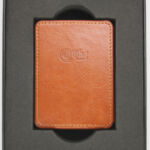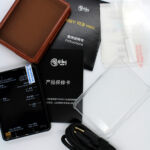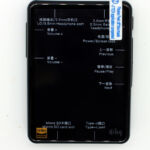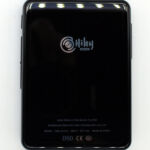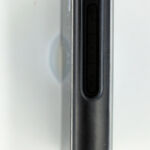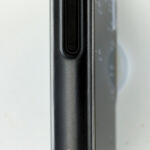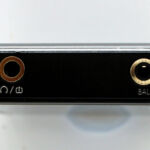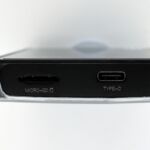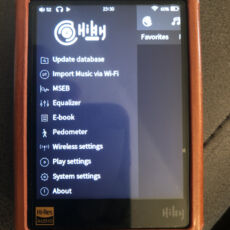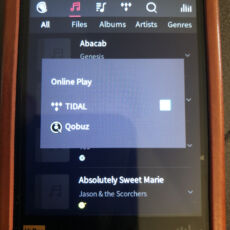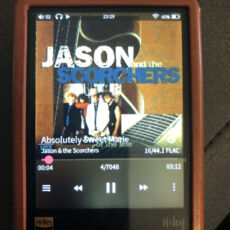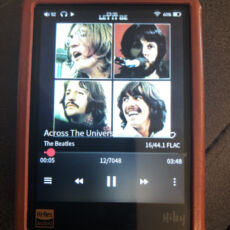Hiby R3Pro Saber
I purchased the Hiby R3 Saber for my own personal use. No disclaimer required. If interested, I bought mine at Xtenik.
Unboxing / Packaging:
Since I ordered during its initial release cycle, I received the leather case for the R3 as part of the package. Later orders may not include that 2nd yellow box. The Saber itself comes packaged in a black slip cover style box with name and picture on front and specs on reverse as has been typical of Hiby products thus far. Once inside the player is nested nicely in a layer of foam and protected in a bag with screen protectors pre-installed. Under that layer, the remainder of the goodies hide with an accessories box containing extra screen protectors and manuals , a soft rubber case, and a usb cable hiding in a 2nd small box. The second yellow box is a pull out style and contains the leather case nested in a foam surround.
Build:
Those familiar with Hiby in general or the R3 will already know where this is headed. Visually the R3pro Saber differs almost none for the earlier R3. Matter of fact without the word saber down the left side, it might be impossible to tell with the devices turned off. The face is almost entirely screen with only a small bezel area around it except for the bottom where the bezel is roughly 7mm tall. The rear face is smooth and also comes with a protector pre-installed (nice touch). Going around the outside starting at the top we have the 3.5mm headphone port at top left and a 2.5mm balanced port at top right. On the right hand side we have On/Off/screen enable/disable at top, an LED indicator, then reverse, play/pause, and forward buttons below that. On the bottom, we have a USB Type-C charging and data port on the right and a micro-sd card slot on the left, and finally as we go up the left side the saber label is at the lower edge while a volume up/down control rests at the top. The unit is small, and light weight, but feels well made with no loose ports, tilted buttons, or seams visible. A fingernail will find the junctions between metal and glass, but otherwise they are tough to pickout. For a small pocket unit, it fits well in the parameters I would hope for – light enough to ignore, small enough to fit in a shirt pocket, and sturdy enough to take a few knocks. The leather case is well fitted and holds the player without slipping around like some I’ve had, but at the same time is not so tight that it makes it hard to get on and off which unfortunately is required as it obstructs the micro-sd card slot so changing cards requires it come out of the case. The provided soft rubber case also works well for those that don’t get or would prefer not to spend on the leather style.
Internals:
The Original R3pro used cirrus logic Chips for both DAC and amplification functions while the newer Saber utilitzes the ESS 9218P for the same functions. This results in slightly higher power ouput on the Saber since the amplification is handled on-chip rather than as a separate component. I’ve seen some discussion regarding why Hiby would decide to raise the power and then only raise it very marginally, the answer lies in the use of the system on a chip audio components. The ESS has slightly more power when used single ended (80mW vs 60mW for the CL version) so the end spec came out slightly higher. Other than the DAC swap and the circuitry changes required around it, the R3pro is changed very little. Bluetooth 5.0 including LDAC suport, Wifi, streaming, and the ability to use it as a dac/amp from a computer source are still unchanged. Formats supported still include PCM up to 32/384, DSD256, and MQA so that too remains unchanged.
Knowing the original R3 utilized the ESS 9218P chipset, and when the pro came out that corrected some of the shortcomings of the original, many questioned why the chipset was switched in order to accomplish this as it changed the voice of the R3 in the process. The R3pro saber is the original R3 with the pro upgrades so realistically is a 2nd generation R3 rather than 3rd.

Controls/UI:
Hiby’s software is pretty well entrenched with several makers using some form of it for their daps these days and has matured quite a bit as a result. When first booted, one is prompted for language and then the player drops right into play mode. From there swiping right opens a menu across the top of the player that gives the user access to pretty much all the functionality of the player. The left most button (Hiby Logo) opens the main menu where the user can manipulate all the settings. Next in line is an icon that looks like two eighth notes and opens the music library with options for file, album, artist, and genre. The single note icon is the favorites where playlists are created and used. Next in line is the Tidal icon that probably needs little explanation at this point, then search, and finally now playing. I tend to set my players on shuffle so spent most of my time either in setting playing with the EQ and 8-ball tuning settings, or in search looking for a particular track I wanted to hear.
Connectivity:
Again, not much changed, bluetooth 5, 5G wi-fi, hibylink, UAT, and bi-directional LDAC still give the end-user a lot of wireless capability while the 3.5 single ended and 2.5 balanced jack give users multiple wired options. The USB port supports data transfer or external DAC mode so can be used to transfer files from your computer or play files directly through it as well. A usb to coax cable is an option for those wanting to use the R3Pro as a pure transport to another DAC as well. Hibylink allows for remote control of the device for those that want to leave it in a pocket or bookbag as well. Its a pretty solid line up of options for a budget player.
Battery Life:
One thing that was for sure with the R3pro (non-saber) was that battery life had been greatly improved from the original. The R3 had a roughly 10 hour life in use while the pro nearly doubled that. The Saber comes closer to the pro than the original but does lose a bit of battery life compare to the CL version. I found the Saber to have a roughly 17 hour life in single ended use and 12-13 in balanced so easily within striking distance of its CL counterpart, but not quite equal. I’d choose to look at this as a substantial improvement over the R3 rather than a minor step back from the pro (CL). Charge time remains about the same with it taking roughly 2.5 hours using a quick charger to go from nearly dead to full charge.
Sound Quality:
Determining a DAPs sound quality is always tough in that so many other things play a role in what you hear. Source material, headphones, and even accessories can alter results. For this reason I used tracks, headphones, earphones and tips I am intimately familiar with so as not to attribute qualities of any of those to the DAP. The Saber has good linearity throughout with very little coloration added. The low end has good texture and weight when paired with headphones within its abilities but did struggle with the He6. Conversely, it worked well with the 600Ω Beyers so it struggled more with delivering enough power for He6 than with fighting high impedance ratings. The bass is not emphasized, but has good rumble and slam when called upon.
Mids are slightly dry compared to the R3pro (CL) but have a bit more detail and are a bit more realistic in timbre which is particularly evident when listening to strings. I listen to a lot of string quartet and orchestral works so this was a plus for the Saber. Vocals have good presence and are well articulated as well. Most headphones are voiced to push vocals slightly forward so it was nice to see a dap that didn’t double down on this by adding an additional push. Guitar growl is well reproduced as well so this dap was equally at home with Yngwie and Mozart.
The top end shows off the full resolving power of the ESS chipset and is where to my ear the biggest departure is from the CL version. The R3pro CL was a bit smoothed over where as the Saber is more aggressive and a bit more realistic. The CL version tended to smooth over tracks that were by nature a bit rough and strident where as the Saber reproduces them in all their glory. For those who want something that always sounds good, the CL version may be a better choice, for those that want an accurate representation of the track, the Saber does a better job of it. Cymbals are sharp wtihout becoming metallic, snare rattle is realistic, and roll-off is somewhere above the headphones and earphones I was using so didn’t limit air or sparkle.
The soundstage on the saber feels a bit deeper than that of the original CL with good dimensionality and some 3d feel. Instrument separation is improved over the CL version due to the slightly more aggressive nature of the ESS. Imaging is good on both and honestly not notably different between versions in my listening.
Comparisons:
Original R3 –
Comparing the Saber to the original R3 makes a lot of sense seeing as it is basically an R3 Gen 2. The only visual change between the two is the 2.5mm jack now has a brass ring around it and the saber name on the side. Physically, all else remains. Sound wise, the original loses a bit of slam in the low end compared to the saber which is a bit faster in its response. The pro is a bit more detailed in the mids while the original is a bit more laidback. Treble again has a bit more detail with both having good extension at the top end. Dynamics are also improved on the Saber with less compression evident in soaring passages.
R3 Pro (Cirrus Logic) –
Visually, very little separates these two with the Saber being labeled as such but otherwise identical. Sound wise, I covered a lot of the details while discussing the signature above, but the highlights are the saber is more detailed, more aggressive, and more accurate, while the Cirrus Logic chipped version is a little warmer, smoother, and more forgiving of poor source material. Those looking for a forgiving DAP to use with their old Mp3 collection may well prefer the R3Pro (Cirrus Logic) while those looking for the utmost in accuracy will want the Saber. Honestly, I think the saber is a bit more accurate in its presentation even than its larger sibling the R5. The R5 is warmer and again a bit more forgiving while the Saber is a bit more neutral and tighter in its presentation.
Shanling M2X –
The Shanling M2X is arguably Hiby’s prime competitor at this point as it comes closest in price and feature set to the R3s. (Arguably the Ibasso DX120 fits here too). In comparing the two side by side, the M2x is slightly taller (1.5cm) with about equal width. I’ll admit to a preference for shanling’s larger controls with its knob for power on/off and volume and slightly larger buttons for play/forward/reverse. Both rely heavily on touch screens for functionality, and both offer very similar abilities to the end user. Sound wise, the Saber is more neutral while the M2X has a bit of a mid-bass boost and sounds a bit warmer as a result. the R3 is also slightly more detailed than the M2x, but not enough to put the two in seperate classes.
Thoughts / Conclusions:
I think we are all becoming jaded as the term “Pro” is getting over used and increasingly is used to denote relatively minor updates to an existing model. Honestly, I didn’t expect a big jump from R3 to R3pro, but it certainly was. The R3 Pro realistically should probably have been introduced to the market as the R4. Yep, it fits somewhere between the 3 and 5 but to my ear closer to the 5 than the original 3. The only thing left from the original was the shell. The one downside to the new version was the use of the Cirrus Logic chipset gave it a different tonality. With the introduction of the Saber, that singular issue with the R3pro is gone. The R3Pro saber could easily be thought of as an R5 lite. Ity doesn’t have the full android instead substituting a simpler UI, it doesn’t offer quite the options of its big brother, but it sounds better, more neutral and more natural. Put simply, if one is in the market for a new DAP and is considering Hiby, Id reach for the R3 pro saber over anything else in the line short of the R6pro. The R3pro was already easy to recommend, the R3pro saber is THE recommendation for sub-$400 daps at the moment for those looking for a near neutral, signature with good tonality. (I’d heard one before I bought mine so I kinda knew going in).
-
Packaging - 7/107/10
-
Accessories - 7/107/10
-
Build Quality - 7.5/107.5/10
-
Sound Quality - 7.5/107.5/10
-
Battery Life - 8/108/10
-
Connectivity - 8/108/10
Summary
Pros: Improved battery life over original, near neutral signature, good build
Cons: limited output power, best reserved for 150Ω or lower headphones.


